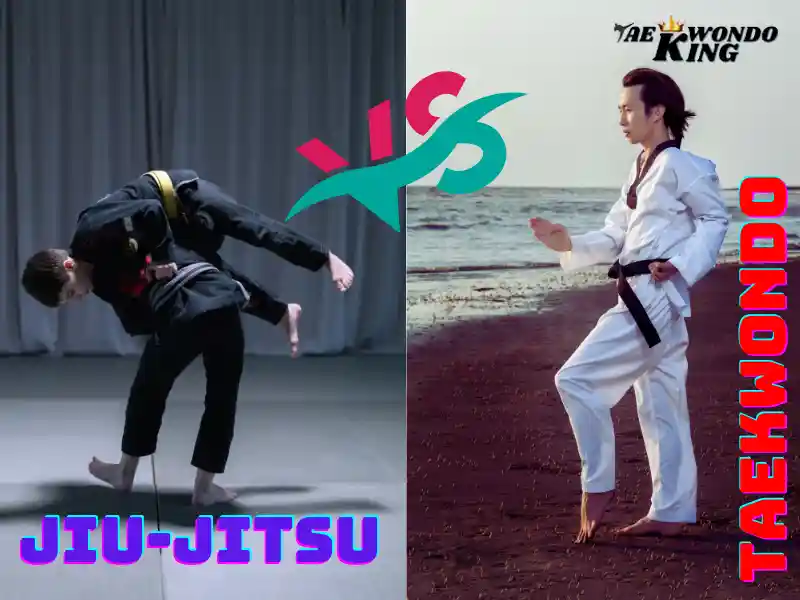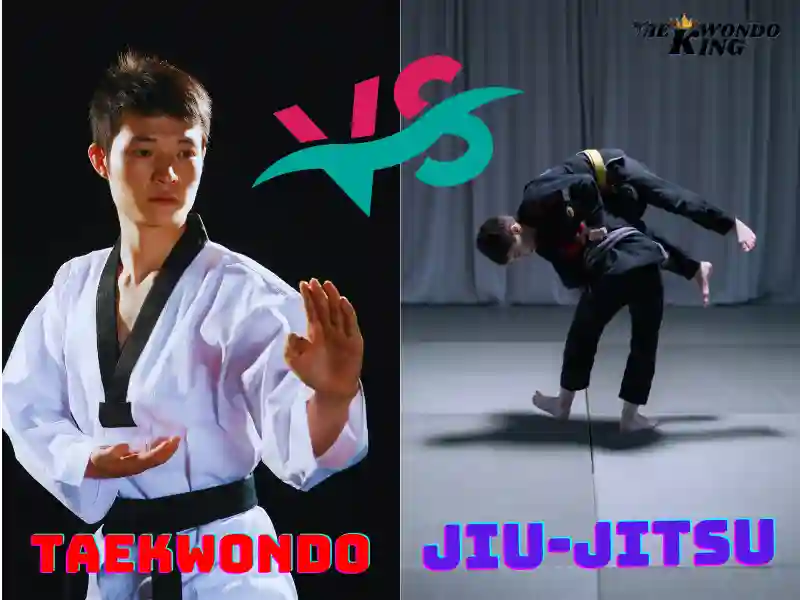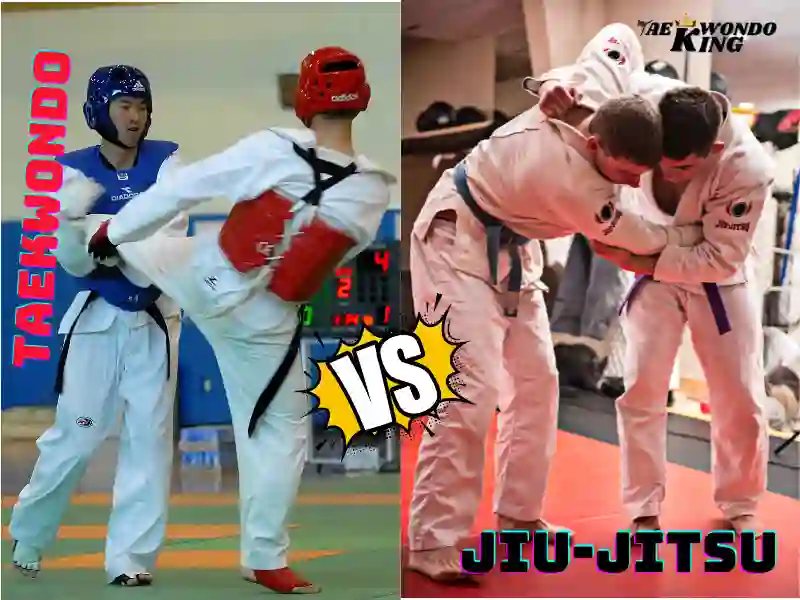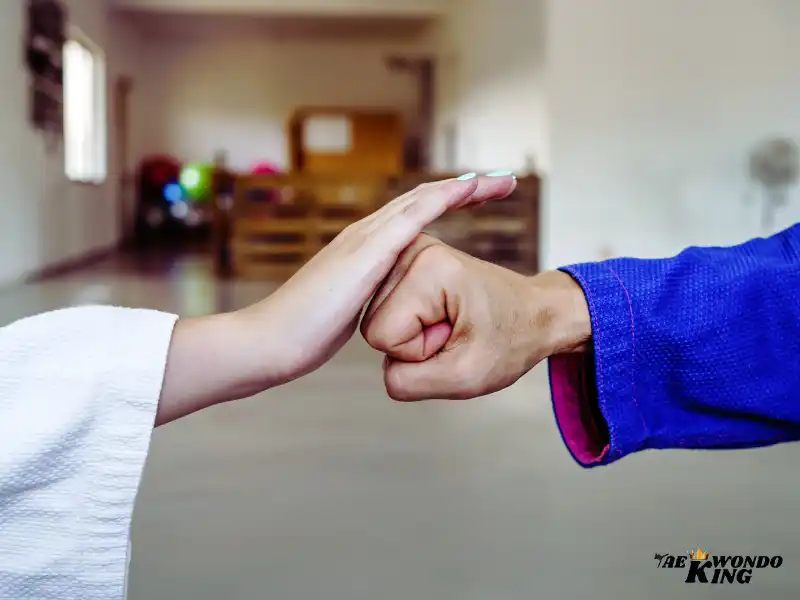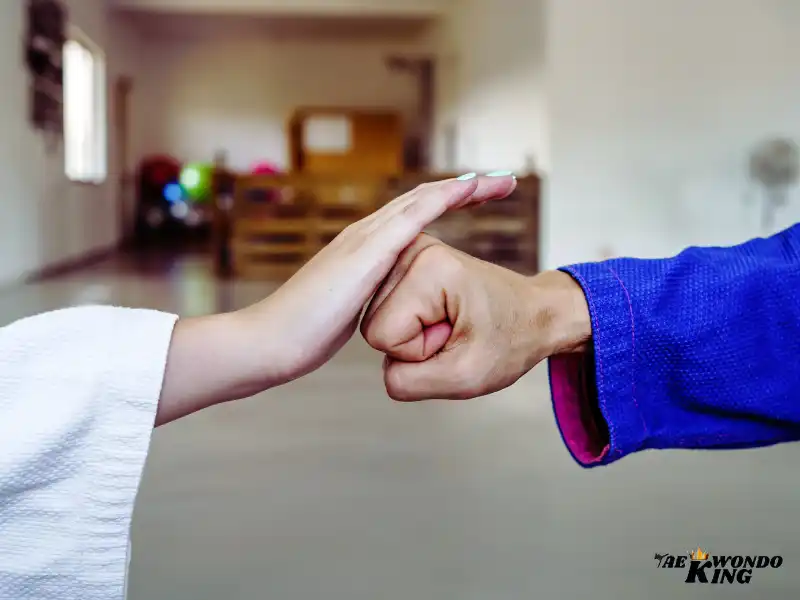
Beginner’s Guide to Jiu-jitsu, a versatile and intricate martial art with a strong emphasis on ground-based combat, offers beginners a captivating journey into the realm of technique, strategy, and physical prowess. Whether you’re new to martial arts or seeking to expand your skill set, this guide will provide you with a comprehensive introduction to the art of Jiu-Jitsu, encompassing its history, core principles, fundamental techniques, training methods, and tips for embarking on your journey as a novice. Today we are talking about A Beginner’s Guide to Jiu-jitsu.
If you are planning to learn jiu-jitsu, you can use the information that I’ve provided here to get started. If you want to learn how to do jiu-jitsu properly, you should focus on the technique. This will give you a better understanding of jiu-jitsu. Learning the technique will also increase your self-confidence.
If you’re thinking about getting into martial arts, there are some things that you should know. The first thing that you should understand is that jiu-jitsu is a combat sport. Therefore, you will be using it to protect yourself from attacks from your opponents. You should never use it to injure someone else. If you do, you will be guilty of assault. It is also important to know that jiu-jitsu is a sport with rules. You should follow these rules so that you do not get penalized.
Understanding Jiu-Jitsu: A Historical Overview
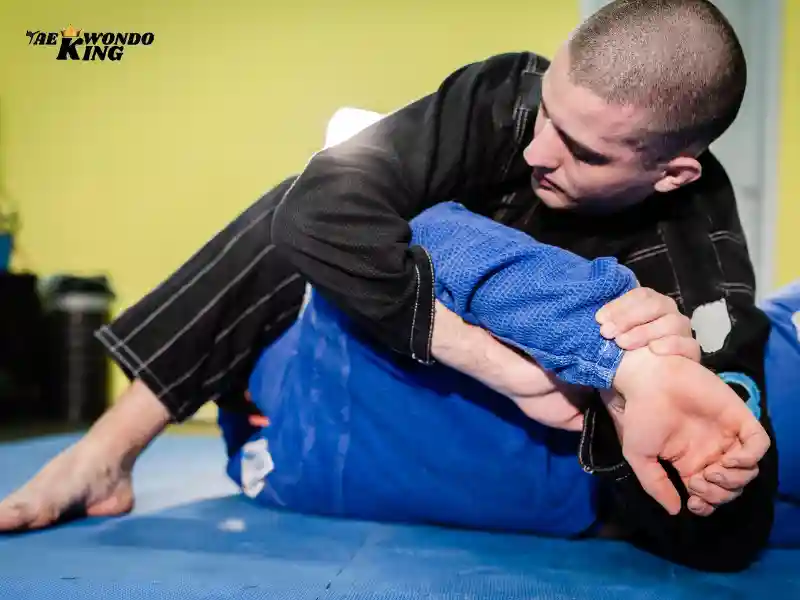
Beginner’s Guide to Jiu-jitsu, a martial art revered for its intricate techniques and strategic brilliance, boasts a captivating history that mirrors its effectiveness and enduring relevance. Originating in Japan, Jiu-Jitsu’s journey encompasses centuries of evolution, innovation, and global influence.
The roots of Jiu-Jitsu can be traced back to ancient Japan, where samurai developed techniques for unarmed combat and self-defense. These methods, collectively known as Jiu-Jitsu, emphasized leveraging an opponent’s force and using minimal effort to gain control.
Fast forward to the early 20th century, when Jiu-Jitsu encountered a transformative shift. Japanese Jiu-Jitsu master Mitsuyo Maeda, known as Count KOMA, embarked on a journey to showcase the art’s effectiveness worldwide. His travels led him to Brazil, where he taught the Gracie family, who adapted and refined Jiu-Jitsu techniques to create Brazilian Jiu-Jitsu (BJJ).
The Gracie family’s pioneering efforts marked a turning point. BJJ focused on ground-based combat, emphasizing technique and leverage to overcome larger opponents. In a historic move, BJJ gained international prominence when Helio Gracie challenged and defeated larger opponents in mixed martial arts matches.
Today, Jiu-Jitsu and its Brazilian Jiu-Jitsu variant continue to thrive globally. From self-defense to sportive competition, Jiu-Jitsu’s historical journey is a testament to its enduring significance, blending traditional wisdom with modern innovation and offering practitioners a rich tapestry of techniques and strategies.
Beginner’s Guide to Jiu-jitsu Core Principles and Philosophy
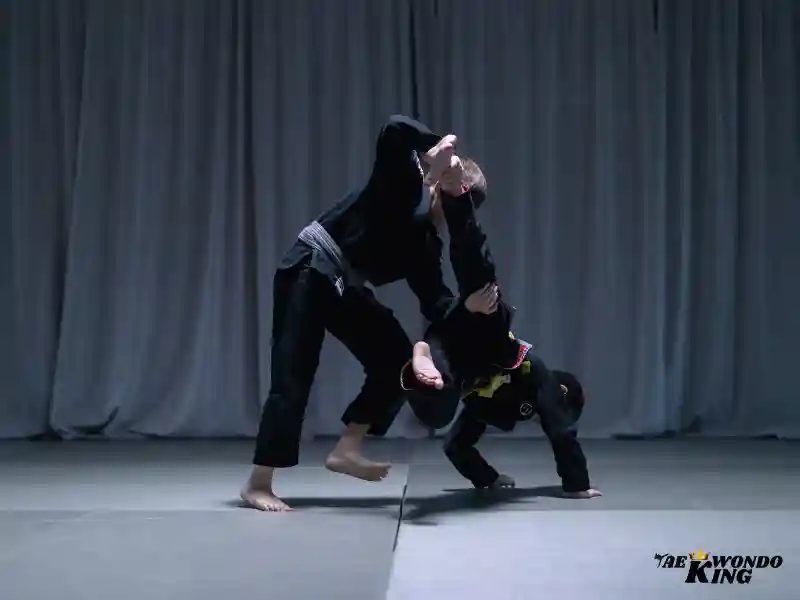
To begin with, the Beginner’s Guide to Jiu-Jitsu is important to understand the core principles of Jiu-Jitsu. These are the fundamentals of the art. We need to keep them in mind at all times to prevent us from doing anything bad when we train. To learn more about the core principles, it would be best to read a book on Jiu-Jitsu, watch an instructional video, or sign up local bjj gym in BJJ class. Avoid signing a long-term contract when starting out. It’s best to learn about the basics before you start to train.
Beginner’s Guide to Jiu-Jitsu operates on a set of guiding principles of effectiveness and philosophy:
- Leverage and Technique Over Power: Jiu-Jitsu prioritizes using an opponent’s force against them, allowing smaller individuals to control and submit to larger opponents.
- Positional Control: Maintaining dominant positions and transitions are crucial for success in Jiu-Jitsu. Proper positioning grants control and sets up submission opportunities.
- Submission Grappling: The art’s ultimate goal is to submit an opponent through joint locks or chokeholds, rendering them unable to continue.
- Live Rolling: Live sparring, commonly referred to as rolling, is integral to Jiu-Jitsu training. It enables practitioners to apply techniques against resisting opponents in real time.
Beginner’s Guide to Jiu-jitsu Fundamental Techniques and Positions
In the intricate tapestry of Jiu-Jitsu, mastering the fundamental techniques and positions lays the groundwork for success. These foundational elements are the cornerstone of effective grappling and set the stage for more advanced maneuvers and strategies.
1. Guard: The guard is a starting point in Jiu-Jitsu, allowing a practitioner on their back to control the opponent’s posture and distance using their legs. Variations like closed guard, open guard, and butterfly guard offer a diverse array of offensive and defensive options.
2. Mount: Achieving the mount position places you on top of the opponent with both knees on the ground. It provides control and the potential for strikes and submissions.
3. Side Control: Side control involves being perpendicular to the opponent, using body weight to restrict their movement, and transitioning to more dominant positions.
4. Escapes: Escaping from inferior positions is essential. Techniques like bridging, shrimping, and framing enable practitioners to regain advantageous positions.
5. Submissions: The art’s ultimate goal, submissions involve joint locks (armbars, kimuras) and chokeholds (rear-naked choke, guillotine), requiring precision and control.
6. Sweeps and Reversals: Sweeps and reversals leverage momentum to transition from inferior positions to dominant ones, often catching opponents off guard.
7. Back Control: Controlling an opponent’s back is a highly advantage position, offering opportunities for chokes and positional control.
8. Takedowns and Throws: Initiating ground encounters begins with takedowns and throws, often used to gain positional advantage.
9. Guard Passing: Breaking an opponent’s guard to establish a more dominant position is a crucial skill in Jiu-Jitsu.
Mastering these fundamental techniques and positions is the key to building a strong foundation in Jiu-Jitsu. Each element interconnects with others, creating a web of strategies and options that enable practitioners to navigate the complexities of ground-based combat effectively.
Beginner’s Guide to Jiu-jitsu Learning Benefits
Jiu-Jitsu is one of the best martial arts you can learn. This martial art has been around for hundreds of years. In the olden days, people used to learn the martial arts as a way of self-defense. There were no guns, knives, or any other deadly weapons. Instead, they learned how to fight with their hands. Jiu-Jitsu is a great martial art that you can use to defend yourself against an attacker.
Many people think that this martial art is easy and that you can learn it quickly. But, if you think this way, you are wrong. To become an expert in this martial art, you have to practice it every day. You can do this by going to school and practicing the art with training partners. Once you become proficient, you will defend yourself even against attackers who are stronger than you.
Beginner’s Guide to Jiu-Jitsu, Jiu-Jitsu is a martial art, so it is a way of fighting that is based on leverage. This art includes more than 40 techniques and more than 80 movements. It is designed to be used in self-defense. It is a very effective self-defense technique. Because it is a martial art, it requires a lot of hard work and dedication. This is because it teaches you how to get better at fighting when you are facing an opponent. This is why you need to keep practicing, even though you may not feel like doing it. This will ensure that you get better. Another benefit of this art is that you will stand up for yourself, which will make you a better person.
Disadvantages and Risks of jiu-jitsu
Jiu-Jitsu is a fantastic martial art with many benefits, but like any physical activity, it does come with some disadvantages and risks. Here’s a breakdown:
Disadvantages:
- Cost: Training can be expensive, with gym memberships, potential uniform (Gi) costs, and occasional seminar fees.
- Time Commitment: Regular training (2-4 classes/week) is recommended for progress, which requires dedication and time investment.
- Physical Demands: Jiu-Jitsu can be physically demanding. It involves exertion, grappling on the ground, and the potential for soreness or fatigue.
- Injury Potential: While injuries are less common than in some martial arts, there’s still a risk of sprains, muscle strains, and minor cuts or bruises.
- Frustration: Learning Jiu-Jitsu takes time and practice. You might feel frustrated during the learning process, especially as a beginner.
Risks:
- Serious Injuries: Although uncommon, more serious injuries like ligament tears or bone fractures can occur, especially with improper technique or accidents.
- Overtraining: Pushing yourself too hard can lead to overtraining syndrome, causing fatigue, decreased performance, and increased injury risk.
- Training Environment: A poorly run gym with unqualified instructors can significantly increase the risk of injuries.
Mitigating the Risks:
- Choose a Reputable Gym: Look for a gym with certified instructors who emphasize safety and proper technique.
- Listen to Your Body: Don’t push yourself beyond your limits. Take rest days and listen to your body’s signals to avoid overtraining.
- Proper Technique: Focus on learning proper technique from the beginning. This will minimize the risk of injuries.
- Communicate: Communicate with your training partners about your experience level and any injuries you have.
- Tap Early: Tap out immediately when you feel pain to avoid serious injuries.
By understanding these disadvantages and risks, and taking steps to mitigate them, you can make an informed decision about starting BJJ and have a safe and enjoyable training experience.
Beginner’s Guide to Jiu-jitsu Training Methods and Approaches
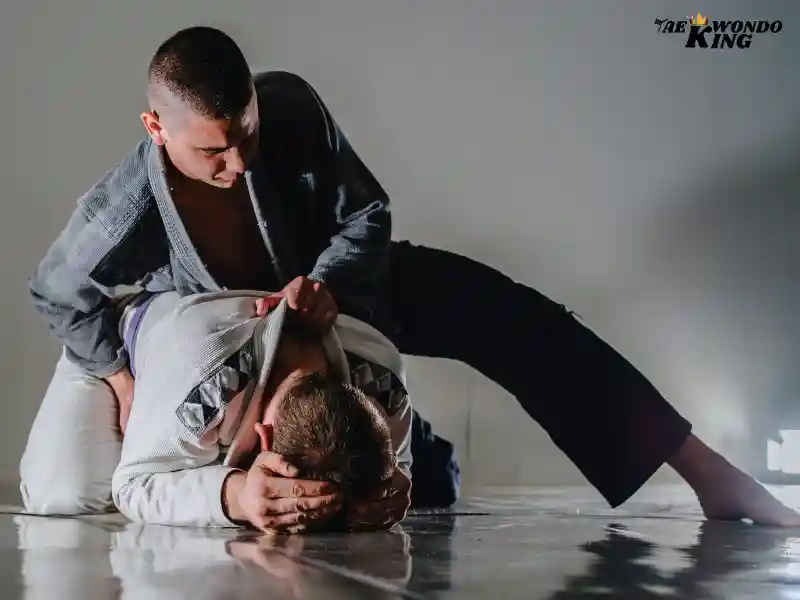
Jiu-Jitsu, a martial art celebrated for its intricate techniques and strategic prowess, employs a diverse range of training methods and approaches that contribute to practitioners’ growth and mastery. These methodologies are designed to build technical proficiency, adaptability, and mental acuity.
1. Technical Instruction: Jiu-Jitsu classes begin with in-depth technical instruction. Instructors break down techniques, focusing on mechanics, leverage, and application.
2. Drilling and Repetition: Practitioner training partners up to repetitive practice techniques, fostering muscle memory and refining precise execution.
3. Live Rolling: At the heart of Jiu-Jitsu training lies live rolling, where practitioners spar with resistance, applying techniques in real-time against resisting opponents.
4. Positional Training: Positional training isolates specific scenarios, allowing practitioners to delve deeper into techniques, escapes, and submissions.
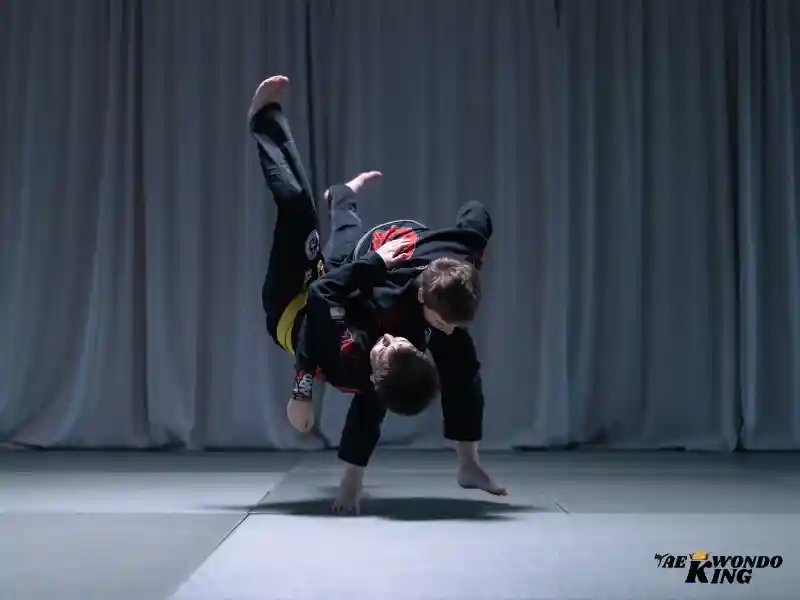
5. Progressive Resistance: As proficiency grows, practitioners transition from cooperative drilling to live rolling with increasing levels of resistance.
6. Competition Simulation: Simulated competition sessions prepare practitioners for the intensity of actual matches, cultivating mental focus and adaptability.
7. Cross-Training: Incorporating elements from other martial arts disciplines or fitness regimes enriches overall skills and physical conditioning.
8. Video Analysis: Reviewing recorded sparring sessions or matches offers valuable insights, enabling practitioners to identify strengths and areas for improvement.
Jiu-Jitsu’s training methods are built upon principles of practicality, strategy, and continuous improvement. By engaging in a combination of structured instruction, live application, and varied training approaches, practitioners forge a comprehensive skill set that serves both self-defense and sportive objectives, fostering growth and mastery in the art.
Jiu-Jitsu Basics for Beginners
BJJ for Beginners: Your Starting Point!
Jiu-Jitsu may seem complex, but these basics will kickstart your journey:
- Find a Gym: Train with qualified instructors who ensure safety and proper technique.
- Gi or No Gi? Some gyms allow regular clothes, but a Gi (uniform) is traditional.
- Master the Fundamentals: Focus on escapes, bridging, and shrimping before advanced moves.
- Train Regularly: Aim for 2-4 classes a week for muscle memory and skill refinement.
- Embrace the Tap: Getting submitted (tapped) is normal. Tap early to avoid injury and learn from mistakes.
Be a Great Training Partner:
- Drill, Drill, Drill: Repetition is key! Perfect your technique through slow, precise drilling.
- Ask Questions: Don’t be afraid to clarify instructions with your instructor or partners.
- Positive Vibes: Jiu-Jitsu is a team effort. Help others learn, maintain hygiene, and communicate openly.
Remember:
- Celebrate Progress: Focus on learning and improvement, not winning every roll. Small victories matter!
- Fuel Your Body: Stay hydrated and eat well to power your training and recovery.
- Most Importantly, Have Fun! Enjoy the challenge, the camaraderie, and the amazing journey of learning BJJ.
What is the basic strategy of Jiu-Jitsu?
Jiu-Jitsu doesn’t have a single basic strategy, but rather a core principle: Gain control and leverage to submit your opponent. Here’s how it breaks down:
- Position Over Submission: Jiu-Jitsu prioritizes getting into dominant positions (mount, back mount) that give you greater control over your opponent. Submissions (chokeholds, joint locks) become more effective from these positions.
- Hierarchy of Positions: Not all positions are equal. BJJ emphasizes moving to more dominant positions (like back mount) and escaping from weaker ones (like bottom mount).
- Utilize Technique and Leverage: Proper technique allows you to use your opponent’s weight and strength against them. This makes submissions more efficient and avoids relying solely on brute force.
By mastering these core ideas, you’ll develop a strategic approach to control the flow of the fight and submit your opponent.
How can I learn Jiu-Jitsu at home?
While you can’t fully learn Jiu-Jitsu at home, you can build a strong foundation to prepare for gym training. Here’s what you can do:
- Online Resources: Find instructional videos from reputable BJJ instructors. Look for content focused on basic techniques.
- Solo Drills: Practice fundamental movements like shrimping, bridging, and escapes. You can find drills designed specifically for solo training.
- Grappling Dummy (Optional): A grappling dummy can be a helpful tool for practice techniques, but it can’t replace the live training experience.
Important Note: Learning Jiu-Jitsu is heavily reliant on live training with a partner. A partner provides resistance, allows you to practice applying techniques, and offers crucial feedback. While at-home training can be a starting point, joining a BJJ gym is essential for true progress.
The complete guide for Jiu-jitsu principles and concepts – beginner to advanced
While a comprehensive guide would be quite lengthy, here’s a roadmap for understanding Jiu-Jitsu principles and concepts, from beginner to advanced:
Beginner:
- Focus on the Fundamentals: Master escapes, bridging, shrimping, posture control, and guard retention. These are the building blocks for everything else.
- Hierarchy of Positions: Learn the concept of dominant positions (mount, back mount) and how to transition between them. Escape from weaker positions (bottom mount).
- Leverage Over Strength: Jiu-Jitsu utilizes technique to control your opponent’s weight and strength, making you more effective.
Intermediate:
- Understanding Submissions: Learn the mechanics and proper application of basic chokes and joint locks.
- Guard Play: Develop strong guard retention and sweeping techniques to control the fight from your back.
- Passing the Guard: Learn how to safely and effectively bypass your opponent’s guard to gain dominant positions.
- Flow and Chaining Techniques: Connect basic techniques to create smooth transitions and control the flow of the roll.
Advanced:
- Advanced Submissions and Variations: Explore more complex submissions and variations on basic techniques.
- Pressure, Timing, and Opportunity: Master the art of applying constant pressure, creating openings, and exploiting your opponent’s weaknesses.
- Developing Your Game: Identify your strengths and weaknesses, and tailor your training to develop a unique style (strong guard player, aggressive passer, etc.).
- Strategic Thinking: Learn to analyze situations, anticipate your opponent’s moves, and formulate strategies for success.
Remember:
This is a continual learning process. As you progress, revisit fundamental concepts to refine your technique and develop a deeper understanding of the art. Here are some resources to delve deeper:
- Books: Look for books like “The Complete Guide for Jiu-Jitsu Principles and Concepts – Beginner to Advanced” by Ryan S Villalobos (This might be the specific resource you were looking for).
- Online Instructionals: Find reputable BJJ instructors offering online courses that focus on principles and concepts.
- Your BJJ Gym: The best resource is your instructor! Ask questions, attend seminars, and actively participate in live training.
Additional Tips:
- Supplement your training with instructional videos from reputable sources.
- Discuss concepts with your instructors and training partners to gain different perspectives.
- Analyze competition matches to see how high-level practitioners apply these principles.
Jiu-Jitsu is a vast and rewarding journey. By focusing on core principles and concepts, you’ll build a solid foundation and unlock the true potential of this amazing martial art.
Embarking on Your Jiu-Jitsu Journey
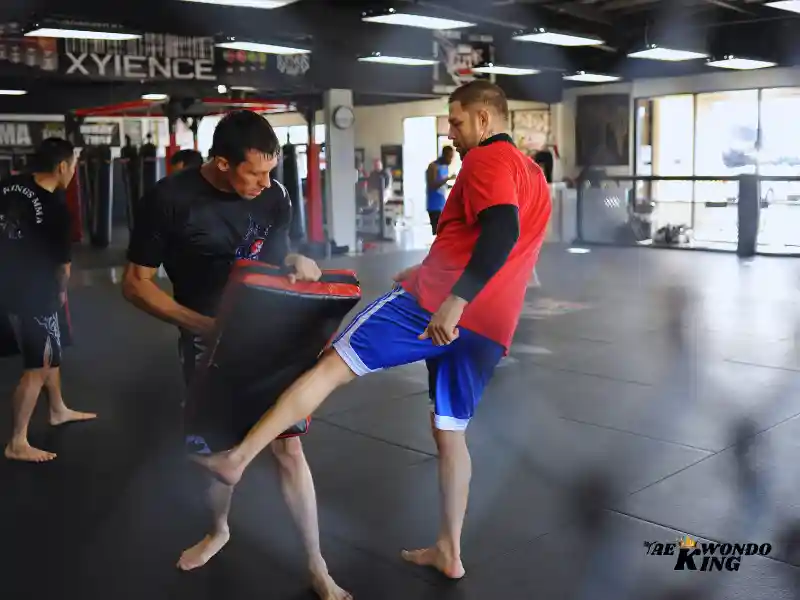
Many people who have never tried jiu-jitsu are hesitant to do so because they think it’s too hard to learn. But don’t worry. You don’t have to spend a lot of money or time. All you need is a mat, some training gloves and a good pair of pants to begin with. The main thing is to not overthink things. Just keep doing what you’re already doing and you will get better at it. You don’t have to be afraid to try anything. Don’t be scared to experiment.
Jiu-Jitsu provides beginners with a unique journey into the world of grappling, technique, and strategy. By immersing themselves in the art’s principles, techniques, and training methods, practitioners not only acquire effective self-defense skills but also experience personal growth, increased mental acuity, and physical conditioning. The path of Jiu-Jitsu is marked by challenges, rewards, and continuous learning. As a beginner, embrace the journey, stay committed, and revel in the evolution of your skills and understanding of this captivating martial art.
How can I achieve a black belt in Jiu-jitsu?
To achieve a black belt in Jiu-jitsu, you need to commit to regular training and practice. Here are some steps you can take:
1. Find a reputable Jiu-jitsu school or academy with qualified instructors.
2. Start with the basics and learn the foundational techniques and principles.
3. Attend classes consistently and dedicate time to practice outside of class.
4. Set specific goals and track your progress.
5. Develop a strong work ethic and discipline.
6. Train with different partners of various skill levels to improve your technique and adaptability.
7. Participate in competitions to test your skills and gain experience.
8. Continuously learn and seek guidance from higher-ranked practitioners.
9. Show respect and humility towards your instructors, training partners, and the art itself.
10. Stay committed and persevere through challenges and setbacks. It takes time and effort to achieve a black belt, so be patient and enjoy the journey.
How can I achieve a successful armbar in Jiu-jitsu?
To achieve a successful armbar in Jiu-jitsu, follow these steps:
1. Begin by securing your opponent in the guard position, with their back on the ground and you on top.
2. Control the arm of your opponent that you wish to attack. You can do this by gripping their wrist or forearm.
3. Use your legs to create leverage by placing one leg over your opponent’s face, and the other leg over their chest or hip.
4. While maintaining control of their arm, pivot your hips and rotate your body to the side of the arm you are targeting.
5. Bring your legs together, squeezing your opponent’s head between your thighs to control their posture.
6. With one hand, grab your opponent’s wrist, and with the other hand, secure their triceps.
7. Extend your hips while pulling down on your wrist and pushing up with your legs, creating a fulcrum on the elbow joint.
8. Maintain control and pressure until your opponent taps out or verbally submits.
Remember to practice this technique under the supervision of a qualified instructor to ensure proper execution and to avoid injury.
How can I achieve proper technique in Jiu-jitsu?
To achieve proper technique in Jiu-jitsu, here are some tips:
1. Find a reputable instructor or academy: Enroll in a Jiu-jitsu school or find a qualified instructor who can teach you the correct techniques and provide guidance.
2. Focus on fundamentals: Develop a strong foundation by mastering the basic techniques and positions. These include guard, mount, side control, and back control.
3. Drill regularly: Repetition is key to improving technique. Spend time drilling specific techniques and movements to build muscle memory and improve execution.
4. Attend regular classes: Consistency is important in any martial art. Attend classes regularly to reinforce your skills and receive feedback from your instructor.
5. Seek feedback and corrections: Don’t be afraid to ask for feedback from your instructor or more experienced training partners. They can point out areas for improvement and help refine your technique.
6. Practice with different partners: Train with partners of various sizes, skill levels, and styles to expose yourself to different scenarios and challenges. This will help you adapt your technique to different situations.
7. Spar and roll: Participate in live training sessions where you can apply your techniques against resisting opponents. This will help you develop timing, reflexes, and the ability to execute techniques under pressure.
8. Study and analyze: Supplement your training by watching instructional videos, studying Jiu-jitsu theory, and analyzing matches of high-level practitioners. This will deepen your understanding of the art and help you identify areas for improvement.
Remember, proper technique takes time and dedication to develop. Be patient, consistent, and open to learning from others, and you will gradually improve your Jiu-jitsu skills.
How can I achieve mental focus in Jiu-jitsu?
To achieve mental focus in Jiu-jitsu, you can try the following techniques:
1. Practice Mindfulness: Engage in mindfulness meditation or breathing exercises to help calm your mind and stay present in the moment during training or competition.
2. Set Clear Goals: Define specific goals for each training session or competition, and focus your mental energy on achieving those goals.
3. Visualization: Visualize yourself performing techniques successfully and winning matches. This mental rehearsal can help enhance focus and confidence.
4. Develop a Routine: Establish a pre-practice or pre-match routine that helps you get into the right mindset. This routine can include exercises, stretching, visualization, or any other activities that help you mentally prepare.
5. Eliminate Distractions: Minimize external distractions by creating a focused training environment and removing any unnecessary distractions from your surroundings.
6. Stay Positive: Maintain a positive mindset and use positive self-talk to boost your confidence and concentration.
7. Develop Mental Resilience: Train yourself to bounce back from setbacks or mistakes by developing mental resilience. Learn from your failures and use them as opportunities for growth.
Remember that mental focus in Jiu-jitsu, like any skill, requires practice and dedication. With consistent effort, you can improve your mental focus and enhance your performance in Jiu-jitsu.
How do you memorize BJJ techniques?
Memorizing BJJ techniques requires a multi-pronged approach that goes beyond just memorization. Here are some key methods:
- Focus on Understanding: Don’t just memorize steps, grasp the underlying principles and mechanics. This builds a foundation for variations and helps you troubleshoot.
- Repetition is Key: Drill techniques repeatedly. Slow and precise drilling builds muscle memory and engrains the movements in your body.
- Visualize: Close your eyes and mentally rehearse the technique, step-by-step. Visualization strengthens neural pathways and improves recall.
- Take Notes: Jot down key points after class to refresh your memory later. Diagrams or flowcharts can be helpful visual aids.
- Active Learning: Ask questions, and explain techniques to others. Teaching reinforces your understanding.
In conclusion,
Beginner’s Guide to Jiu-Jitsu, Jiu-Jitsu is a martial art that is practiced mainly in the United States, Europe, and Asia. It is considered a self-defense system because it teaches you to fight effectively from a position of disadvantage. Practicing BJJ will teach you to be more aware of your surroundings and protect yourself. I am a beginner myself, and here are some things that I have learned that I want to share with you.
FAQs:
Is Jiu-jitsu suitable for beginners?
Yes, Jiu-jitsu is suitable for beginners. Many Jiu-jitsu academies offer classes specifically designed for beginners, where they can learn the basic techniques and gradually progress to more advanced moves. It is a welcoming and inclusive sport, so don’t be intimidated to give it a try!
What are the benefits of practicing Jiu-jitsu?
Practicing Jiu-jitsu offers numerous benefits. It improves physical fitness, strength, and flexibility. It also enhances mental focus, discipline, and problem-solving skills. Additionally, Jiu-jitsu is a great way to relieve stress and build self-confidence.
What is the best age to learn Jiu-jitsu?
There is no specific age to start learning jiu-jitsu. It is suitable for people of all ages, from children to adults. Many jiu-jitsu academies offer classes for different age groups, so you can start and progress at your own pace.
Is Jiu-jitsu a good form of self-defense?
Yes, jiu-jitsu is considered to be one of the most effective forms of self-defense. It focuses on using leverage and technique to overcome a stronger opponent, making it suitable for people of all sizes and physical abilities. Learning jiu-jitsu can provide you with the skills and confidence to protect yourself in real-life situations.
How do I start learning jujitsu?
To start BJJ, find a reputable gym with qualified instructors. They’ll teach you safely and ensure proper technique. You can train in workout clothes initially, but a Gi (uniform) is traditional.
How can I learn Jiu Jitsu by myself?
Learning Jiu-Jitsu entirely by yourself is difficult. The art relies heavily on live practice and feedback. However, you can build a foundation for BJJ at home:
- Find Instructional Videos: Look for online resources from reputable instructors.
- Focus on Solo Drills: Practice basic movements like shrimping, bridging, and escapes.
- Consider a Grappling Dummy: It can help practice techniques but can’t replace a live partner.
Remember, this is a starting point. To truly progress, joining a BJJ gym is best.
Can you start Jiu Jitsu with no experience?
Absolutely! Brazilian Jiu-Jitsu (BJJ) is very beginner-friendly. Most gyms have fundamental classes specifically designed for those with no prior experience. They’ll teach you the basics from the ground up, so you can jump right in and start learning.
How many years does it take to learn Jiu-Jitsu?
There’s no set timeframe to “learn” Jiu-Jitsu. It’s a lifelong journey of continuous improvement. Here’s a breakdown:
- Basics & Self-Defense: 1-2 years can give you a solid foundation in fundamental techniques and basic self-defense skills.
- Intermediate Level (Blue Belt): This belt typically takes 2-4 years of consistent training. You’ll have a broader skillset and some competition experience (optional).
- Advanced & Black Belt: Reaching a black belt is a significant accomplishment, often taking 10+ years of dedicated training. It signifies a deep understanding and mastery of the art.
Remember, these are general ranges. You progress at your own pace! Focus on enjoying the journey and celebrating your improvements.

Founder, Owner, and CEO of TaekwondoKing.
He is one of the top 100 martial artists in Bangladesh and among the top 20 referees in Bangladesh.
Ehatasamul Alom is an esteemed Taekwondo 3rd Dan Black Belt with over 15 years of experience in this dynamic martial art. Born in Rajshahi, Bangladesh, Ehatasamul’s journey with Taekwondo began at the tender age of seven. His passion led him to compete at national and international levels, where he has bagged numerous awards and honors. He is also a member of the Taekwondo National Referee Panel.
With a Bachelor’s degree in Sports Science from the prestigious Rajshahi University, Ehatasamul has a deep understanding of the technical and scientific aspects of martial arts and some other martial arts.
In 2022, Ehatasamul created the “TaekwondoKing.com” blog to share his knowledge and experiences. His articles focus on Taekwondo training techniques, competition strategies, and the art’s rich history and philosophy. He also writes about the importance of mental fortitude and discipline, key aspects of his teaching philosophy. His goal is to inspire both beginners and seasoned practitioners worldwide through insightful and engaging content.
If you need any help, contact Ehatasamul Alom at any time.

